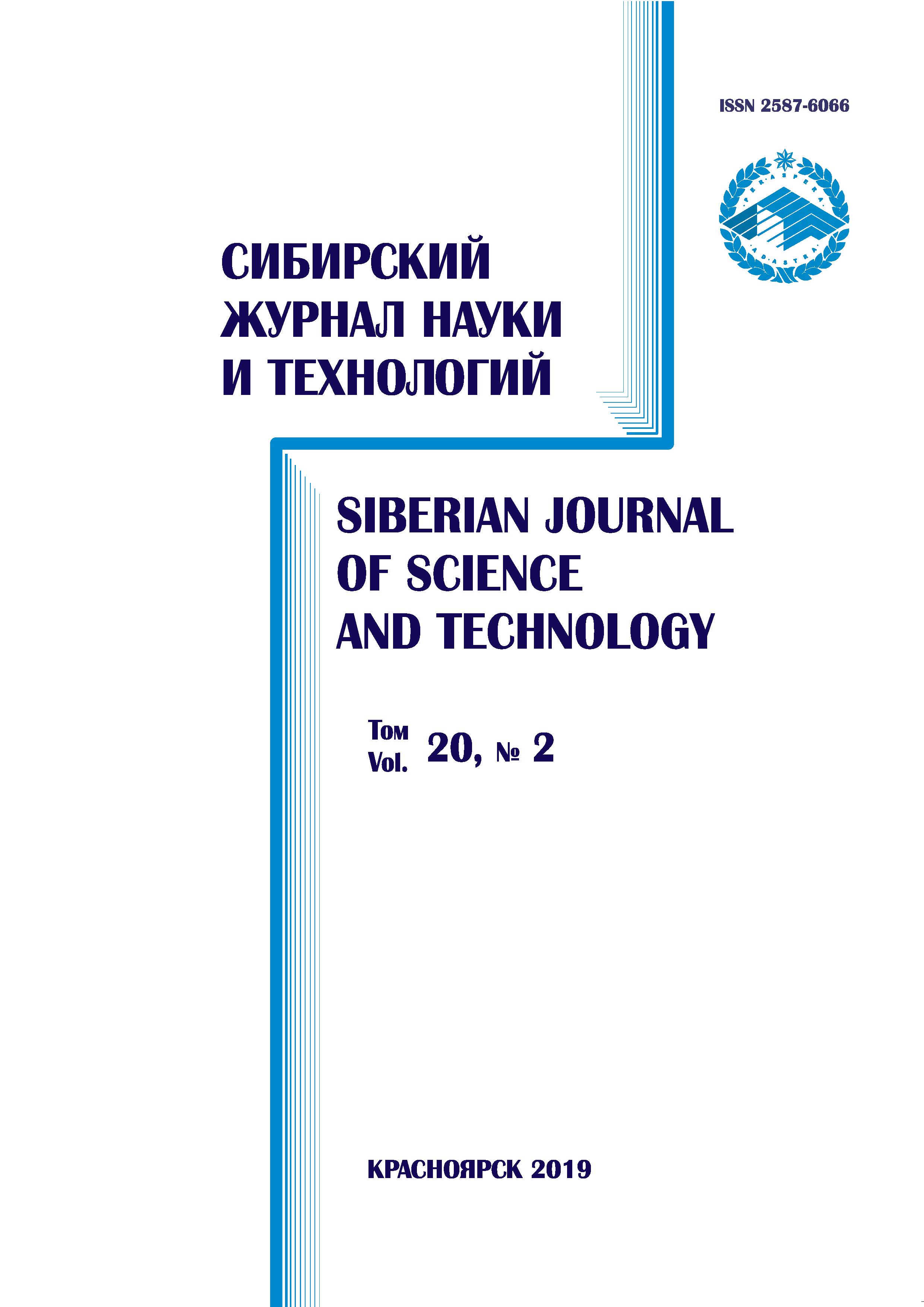Inter-satellite optical communication link
- 作者: Aleksandrov A.V.1, Vasilenko A.V.2, Korolev D.O.3
-
隶属关系:
- Kirensky Institute of Physics – Federal Research Center “Krasnoyarsk Scientific Center” Siberian Branch of the Rus-sian Academy of Sciences
- JSC “Academician M. F. Reshetnev “Information Satellite Systems”
- Siberian Federal University
- 期: 卷 20, 编号 2 (2019)
- 页面: 204-209
- 栏目: Section 2. Aviation and Space Technology
- ##submission.datePublished##: 15.06.2019
- URL: https://journals.eco-vector.com/2712-8970/article/view/567772
- DOI: https://doi.org/10.31772/2587-6066-2019-20-2-204-209
- ID: 567772
如何引用文章
全文:
详细
A two-level system of data transmission in the optical range is considered between a low-orbit spacecraft located in a sun-synchronous orbit and a repeater satellite located in a geostationary orbit. This topic is rather relevant due to the fact that the rapid development of remote sensing satellites resulted in the increase of the amount of transmitted information, which in consequence introduced new requirements for communication systems. The increase of data transmission rate and severization of requirements for communication systems contributed to the development of one of the most promising areas of space communications, based on the information transmission via a laser channel, due to a high energy concentration and a much higher carrier frequency. The prospects for the application of optical communication systems are designated by lower power consumption, dimensional specifications and the mass of the transceiver equipment of the optical range (compared to radiofrequency range systems).
The article describes the solution of application of optical communication link between a low-orbit spacecraft and a repeater satellite. The main factors that contribute to the attenuation in the process of signal propagation along the route are presented and analyzed. A model of a communication channel between a low-orbit spacecraft and a repeater satellite is provided for a visual image. Two different approaches of mutual guidance and tracking of laser terminals are described for using beacons and without ones. EDRS foreign system is considered as an analogue. The estimation of the main parameters of the communication link is given.
The communication system considered in the article will allow for greater carrier capacity of the data transmission in the optical range between the low-orbit spacecraft and repeater satellite. The application of this system will allow solving problems, including in the interests of any departments and structures of the Ministry of Defense of the Russian Federation, for which the rate of obtaining information is one of the basic requirements for a satellite communication system. The tasks of precise targeting of receiving and transmitting devices arising as a result of narrow beam patterns can be solved with current technical means.
作者简介
Aleksandr Aleksandrov
Kirensky Institute of Physics – Federal Research Center “Krasnoyarsk Scientific Center” Siberian Branch of the Rus-sian Academy of Sciences
Email: alexa820@mail.ru
Postgraduate student
俄罗斯联邦, 50, bldg. 38, Akademgorodok St., Krasnoyarsk, 660036Aleksandr Vasilenko
JSC “Academician M. F. Reshetnev “Information Satellite Systems”
Email: a.v.vasilenko@mail.ru
Leading Engineer
俄罗斯联邦, 52, Lenin St., Zheleznogorsk, Krasnoyarsk region, 662972Dmitry Korolev
Siberian Federal University
编辑信件的主要联系方式.
Email: korolyov.93@gmail.com
Postgraduate student
俄罗斯联邦, 79, Svobodny Av., Krasnoyarsk, 660041参考
- Maral G. Satellite communication system. John Wiley & Sons Ltd, Publication, 2009, 743 р.
- Atrohov A. Yu. [Problems of remote sensing of the earth by modern radar methods]. XXXVI mezhdunarodnaya nauchno-prakticheskaya konferentsiya “Nauchnoe soobshchestvo studentov XXI stoletiya. Tekhnicheskie nauki” [XXXVI International Scientific and Practical Conference “Scientific community of students of the XXI century. Technical Sciences]. Novosibirsk, 2015, No. 9 (35), P. 168 (In Russ.).
- Akimov A., Terekhov S., Danilov D., Shevchuk D. [Prospects for increasing the frequency of observation by space remote sensing Systems]. Tekhnologii i sredstva svyazi. 2016, No. 6 (117), P. 85–91 (In Russ.).
- Heine F., Troendle D. Heine F. Progressing towards an operational optical data relay service. Free-Space Laser Communication and Atmospheric Propagation XXIX, 2017. P.
- Glindemann A., Hippler S. Adaptive optics on large telescopes. Germany, Heidelberg, 1999, 44 p.
- Zuev V. E. Rasprostranenie lazernogo izlucheniya v atmosfere [Propagation of laser radiation in the atmosphere]. Moscow, Radio i Svyaz' Publ., 1981, 288 p.
- Henniger H., Wilfert O. An introduction to free-space optical communications. Germany, Wessling, 2010, 10 p.
- Sodnik Z., Sans M. Extending EDRS to Laser Communication from Space to Ground. Proc. International Conference on Space Optical Systems and Applications (ICSOS), 2012, October 9–12 P. 6.
- Maini A., Agrawal V. Satellite Technology. John Wiley & Sons Ltd, Publication. 2011, P. 696.
- Wilfert O., Kolka Z. Statistical model on free-space optical data link. Proceedings of SPIE. 2004, Vol. 5550, P. 203.
- Vasilenko A. V., Kashkin V. B. [Evaluation of the influence of astronomical refraction on an optical satellite link]. Zhurnal Sibirskogo federal'nogo universiteta. Inzheneriya i tekhnologiya. 2012, Vol. 5, No. 3, P. 353–357 (In Russ.).
- Aleksandrov A. V., Melnikov P. V., Tverdochlebov S. S., Reshetnikov S. Yu., Milko D. S. [Protected satellite communication model based on System Vue]. Nauchnaya sessiya TUSUR [Scientific session TUSUR]. Tomsk, 2015, P. 60–62 (In Russ.).
- Caplan D. Laser communication transmitter and receiver design. Journal Optical and fiber communication report. 2007, P. 138.
- Roddy D. Satellite communication, Prentice-Hall Inc., Publication, 1989, P. 656.
- Heine F., Troendle D. Progressing towards an operational optical data relay service. Free-Space Laser Communication and Atmospheric Propagation XXIX, 2017. P. 7.
补充文件









